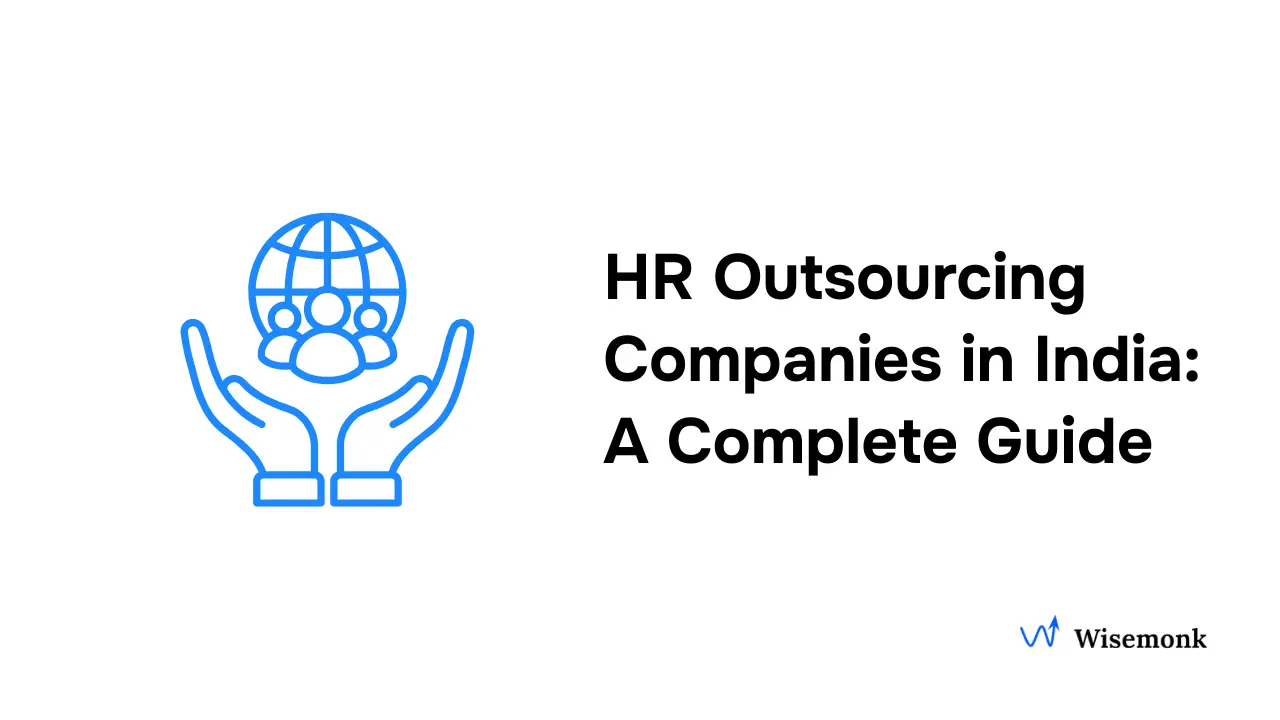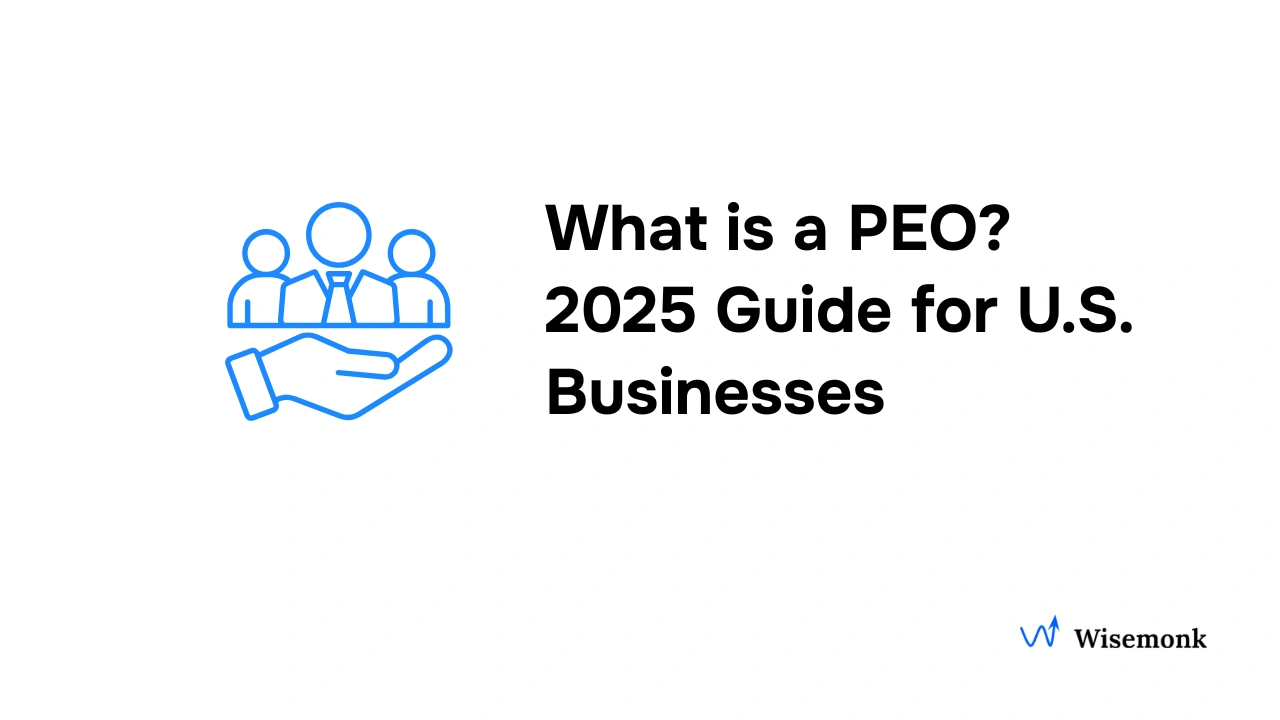- To outsource work from the US to India, categorize your tasks as project-based (for agencies) or role-based (for contractors), run a paid pilot to test communication and delivery, and ensure you have a US-standard contract that legally protects your intellectual property (IP).
- U.S. companies outsource to India to access a vast pool of skilled professionals, achieve up to 60-70% cost savings, and maintain 24/7 operations thanks to the time zone advantage.
- The most outsourced services include IT and software development, business process outsourcing, digital marketing, technical support, and market research; areas where India’s workforce brings specialized expertise and proven results.
- Common challenges like cultural gaps, inconsistent quality, or data security risks can be avoided by enforcing SLAs, maintaining open communication, and partnering only with certified providers.
Need help with outsourcing work to India? Contact us today!
Discover how we create impactful content.
How can U.S. companies outsource work to India?[toc=Outsource Work to India]
To outsource work to India effectively, you first need to categorize your tasks as either "project-based" (best for agencies) or "role-based" (best for contractors). Once defined, the process involves vetting partners on platforms like Clutch or Upwork, enforcing a strict "paid pilot" period to test communication flows, and signing a US-standard NDA to protect your IP before full-scale production begins.
Outsourcing isn't just about "cheap labor" anymore; it's about accessing specialized talent that is hard to find or too expensive back home. Whether you are a startup founder in Austin or an enterprise director in New York, here is how to navigate the Indian outsourcing market without getting burned:
Step 1: The "What" Audit (Core vs. Context)
Before you look for a partner, you must define exactly what you are shipping overseas.
- Task-Based Work: Data entry, lead generation, or basic graphic design. These are low-risk and process-heavy.
- Project-Based Work: "Build me an iOS app" or "Redesign my website." This requires a partner with project management capabilities, not just doers.
- Specialized Skills: AI development, blockchain, or complex backend engineering.
- Rule of Thumb: Keep your "secret sauce" (core business strategy) in the US initially, and outsource the execution or the repetitive "context" work.
Step 2: Choose Your Vehicle (Freelancer vs. Agency)
This is where many US companies stumble. They hire a freelancer when they actually needed an agency.
- The Freelancer Route (Upwork/Toptal): Best for solo tasks. If you need one person to edit videos or write code for 10 hours a week, go here.
- The Agency Route (Clutch/GoodFirms): Best for scale. If you need a team (a designer, a developer, and a QA tester) and don’t want to manage them individually, hire a boutique Indian agency. They provide the project manager (PM) who acts as your single point of contact. Companies like Wisemonk specialize in this model, matching US businesses with pre-vetted, scalable teams.
Step 3: Verify the "Ops Maturity"
When vetting Indian vendors, don't just look at their code or design portfolio. Look at their operations.
- The 24-Hour Test: Send an email with a few questions. If they take 3 days to reply during the sales process (when they should be wooing you), it will be worse once they have your money.
- Infrastructure: Do they have backup power? (Power cuts can still happen in some parts of India). Do they use enterprise-grade security tools?
- The Video Call: Get them on Zoom. You aren't checking for a perfect American accent; you are checking for comprehension. Can they explain complex ideas simply? Do they ask clarifying questions?
Step 4: The "Paid Pilot" (Try Before You Buy)
Never sign a 12-month contract on day one.
- The Strategy: Carve out a small, non-critical piece of your project, something that takes 2 weeks and costs $500-$2,000.
- The Goal: Treat this as a dating period. You are testing their adherence to deadlines, their ability to follow instructions, and how they handle feedback. If the pilot fails, pay the invoice and walk away. It’s cheaper than a failed big project.
Step 5: Lock Down the Legal (IP Protection)
India has strong IP laws, but enforcing them can be slow. Your best defense is a strong US-style contract.
- NDA (Non-Disclosure Agreement): Essential before sharing sensitive data.
- MSA (Master Services Agreement): Ensure it explicitly states that "Work for Hire" applies, meaning you own the code/design the moment you pay for it.
- Jurisdiction: Ideally, your contract should state that disputes will be resolved in US courts (e.g., "Governed by the laws of Delaware"). Most reputable Indian agencies are happy to sign these.
"Time & Materials" vs. "Fixed Price"
- Fixed Price: You pay $5,000 for a website. Good for small, well-defined projects. The risk is on the vendor.
- Time & Materials (T&M): You pay for the hours worked. Preferred by US agile teams. It offers flexibility to change requirements mid-stream, which is how most modern software is built. If you trust the vendor, T&M usually yields a better product.
Why do U.S. companies outsource to India?[toc=Why U.S. Outsources to India]
U.S. companies outsource to India to reduce costs, access specialized expertise, and ensure round-the-clock business operations. India remains one of the world’s most preferred outsourcing destinations because of its skilled workforce, strong IT industry, and competitive edge in technology and innovation.
Key Reasons Why Businesses Outsource to India:
- Significant Cost Savings: Labor costs in India are up to 60-70% lower than in the U.S. This cost efficiency helps businesses optimize operational expenses without compromising quality.
- Vast Pool of Skilled Professionals: India offers a large English-speaking workforce skilled in IT, software engineering, digital marketing, and business process outsourcing. According to NASSCOM, the IT and software development industry alone employs over 5 million professionals.
- Access to Specialized Expertise: From artificial intelligence and cloud computing to market research and tech support, Indian professionals provide technical expertise across a wide range of outsourcing services.
- Time Zone Advantage: India’s 12-hour difference from the U.S. allows for round-the-clock operations. Work continues overnight in India, ensuring faster project turnaround and increased productivity.
- Strong IT and Outsourcing Infrastructure: Leading Indian companies such as Tata Consultancy Services (TCS), Infosys, and Wipro are global leaders in offshore outsourcing, offering advanced project management tools and data security standards.
- Supportive Government and Business Environment: The Indian government promotes the outsourcing industry through pro-tech policies, stable internet infrastructure, and digital transformation incentives, further strengthening India’s position in the global outsourcing market.
"India’s outsourcing story has evolved from a cost-cutting hack to a global innovation engine — powering 1.7% growth in the $1T+ IT services market, fueled by cloud, automation, and world-class talent."
Source: Gartner's Article →
What types of work are commonly outsourced to India?[toc=Commonly Outsourced Work]
U.S. companies outsource a wide range of technical, creative, and operational tasks to India. The country’s skilled workforce and strong digital infrastructure make it ideal for both IT and non-IT outsourcing services.
Common Types of Work Outsourced to India:

1. IT and Software Development
India is a global powerhouse for software development, web development, and product engineering. Thousands of U.S. companies partner with Indian firms to build mobile apps, enterprise systems, and custom software solutions. The country’s IT industry exceeds $250 billion in revenue (NASSCOM 2024), led by global giants like Tata Consultancy Services (TCS), Infosys, and Wipro.
Indian engineers are well-versed in cloud computing, AI, cybersecurity, and automation, making India an ideal partner for outsourcing software development and digital transformation projects.
2. Business Process Outsourcing (BPO)
India’s business process outsourcing sector handles core business operations such as customer service, accounting services, payroll outsourcing, data entry, and HR management. According to IBEF, the Indian BPO industry is valued at over $44 billion, driven by scalability, advanced communication infrastructure, and multilingual talent.
U.S. companies often use Indian BPOs to streamline back-office processes, reduce administrative burden, and improve service delivery through offshore outsourcing models.
3. Digital Marketing and Social Media Management
India has become a hub for digital marketing, SEO services, content creation, and social media management. Skilled marketers in India help U.S. businesses expand online visibility using data-driven campaigns and creative storytelling.
By outsourcing these functions, U.S. firms can maintain brand consistency, execute multi-channel strategies, and manage large campaigns cost-effectively using project management tools and analytics platforms.
4. Technical Support and Helpdesk Services
India is globally recognized for its technical support and IT helpdesk services. Skilled professionals provide 24/7 customer and tech support across multiple time zones, ensuring that U.S. companies deliver uninterrupted service to clients.
Outsourcing technical support to India not only ensures cost efficiency but also guarantees access to trained specialists in software troubleshooting, system monitoring, and infrastructure management.
5. Market Research and Data Analytics
With a growing number of data analysts and researchers, India provides expertise in market research, data entry, and predictive analytics. Indian firms use emerging technologies like AI and big data to help U.S. companies uncover insights, understand market trends, and make informed business decisions faster.
6. Creative and Content Services
From copywriting and web content to video editing and graphic design, India has become a preferred destination for creative outsourcing. Indian professionals combine technical expertise with creative thinking, helping brands produce engaging, high-quality marketing content at scale.
“India’s outsourcing model has evolved far beyond back-office work. Today, it’s a hub for innovation, engineering, analytics, and business strategy, driving measurable impact for global enterprises.”
— Keshav Murugesh, Group CEO, WNS Global Services Source →
What challenges should you expect and how to avoid them?[toc=Key Challenges]
Even though India is the most established outsourcing destination, U.S. businesses often face operational, communication, and compliance hurdles when managing remote teams. The key is to anticipate these challenges early and address them with the right processes and partners.
1. Communication and Time Zone Gaps
Although India’s 12-hour time difference enables 24/7 productivity, it can also cause scheduling delays or unclear communication between teams. Misalignment on deliverables and updates often leads to project slowdowns.
How to avoid it:
- Maintain 2–3 hours of overlap between U.S. and Indian teams for meetings.
- Use project management tools like Asana, Jira, or Trello to keep communication structured and traceable.
- Document every key decision and use dashboards for progress tracking.
2. Cultural and Workstyle Differences
Work culture and communication style in India may differ from Western norms, which can sometimes affect collaboration or feedback loops.
How to avoid it:
- Conduct cross-cultural orientation sessions for both U.S. and Indian teams.
- Encourage direct communication and clarity over hierarchy.
- Focus on output-based performance metrics rather than rigid work hours.
3. Data Security and Privacy Concerns
Outsourcing involves sharing sensitive customer or business data across borders. Without proper safeguards, this poses compliance and data breach risks.
How to avoid it:
- Work with partners certified in ISO 27001 or SOC 2 Type II standards.
- Include data processing agreements and confidentiality clauses in contracts.
- Use secure communication channels and enforce access-based permissions.
- Verify compliance with India’s Digital Personal Data Protection Act (DPDP 2023).
4. Quality Control and Performance Tracking
Inconsistent delivery standards or weak process monitoring can derail projects and reduce ROI.
How to avoid it:
- Define clear Service Level Agreements (SLAs) and measurable KPIs.
- Use quality assurance playbooks and regular audits to maintain standards.
- Implement agile sprints or weekly reviews to detect issues early.
5. Vendor Reliability and Hidden Costs
Some outsourcing companies may overpromise during sales discussions but underdeliver in execution. Others might hide costs like onboarding fees, overtime charges, or tool licenses.
How to avoid it:
- Shortlist only established Indian outsourcing firms with strong U.S. client portfolios.
- Run a short pilot project before committing long-term.
- Negotiate transparent pricing and detailed scope of work documentation.
6. Legal and Compliance Issues
Outsourcing can expose your business to taxation, intellectual property, and employment compliance risks, especially when hiring full-time Indian professionals.
How to avoid it:
- Partner with an Employer of Record (EOR) in India to handle all local labor laws, taxes, and statutory contributions.
- Ensure contracts include IP transfer and non-disclosure clauses.
- Stay compliant with PF, ESI, and gratuity regulations when employing Indian staff.
“Most outsourcing challenges aren’t about talent—they’re about misaligned expectations and governance. The companies that succeed in India invest in structured communication and transparent partnerships.”
— Peter Bendor-Samuel, CEO, Everest Group Source →
What are the best practices for successful outsourcing partnerships?[toc=Best Outsourcing Practices]
Outsourcing to India succeeds when you treat your vendor like a strategic partner, not a cost center. U.S. businesses that thrive with offshore teams focus on clarity, collaboration, compliance, and culture, all backed by measurable outcomes.
1. Start with Clear Goals and Metrics
Set expectations before the contract is signed. Define what success means in numbers, delivery speed, uptime, code quality, or conversion rate. Share these KPIs with your outsourcing partner so both sides align on outcomes, not just tasks.
2. Choose the Right Partner, Not Just the Cheapest
India offers thousands of outsourcing companies, but not all have the same expertise or domain experience. Evaluate partners based on:
- Track record with U.S. clients
- Domain specialization (e.g., software development, digital marketing, technical support)
- Security certifications like ISO 27001 or SOC 2
- Communication and cultural compatibility
Choosing a partner who understands your business strategy and compliance needs is more valuable than chasing the lowest bid.
3. Build a Transparent Workflow
Use project management tools like Jira, Slack, or Monday.com to keep work visible. Create shared dashboards, weekly syncs, and escalation paths for quick decision-making.
A transparent workflow reduces micromanagement and ensures everyone stays aligned on deliverables and timelines.
4. Invest in Relationship Management
Strong outsourcing relationships are built on trust and consistency. Assign a dedicated account manager or HR liaison to maintain engagement. Schedule quarterly business reviews to discuss performance, feedback, and future goals.
Top-performing U.S. companies view their Indian vendors as an extension of their internal teams—not outsiders.
5. Prioritize Security and Compliance
Ensure every partner follows strict data protection policies and abides by both U.S. and Indian regulations.
- Encrypt sensitive data during transfers.
- Maintain access controls for confidential projects.
- Regularly audit compliance with India’s DPDP Act and U.S. privacy norms.
A compliant outsourcing setup strengthens your reputation and customer trust.
6. Use the Time Zone Advantage Wisely
India’s 12-hour time gap allows for round-the-clock operations if managed well. Use this to shorten project cycles. U.S. teams plan during the day while Indian teams execute overnight.
However, ensure overlapping hours for critical communication to prevent delays or dependency gaps.
7. Start Small, Then Scale
Run a pilot project before scaling operations. Evaluate the partner’s performance across cost, communication, and quality metrics. Once trust is built, expand the scope gradually to avoid disruption or quality issues.
8. Recognize and Reward Good Performance
Motivating your offshore teams boosts morale and retention. Recognize milestones, share positive feedback, and create a reward system for high performers.
This human touch transforms outsourcing into a long-term strategic partnership rather than a transactional engagement.
How can an Employer of Record (EOR) simplify outsourcing to India?[toc=Role of an EOR]
An Employer of Record (EOR) helps U.S. businesses outsource work to India easily by acting as the legal employer for their Indian team. This allows companies to focus on operations while the EOR manages all hiring, payroll, compliance, and HR functions on their behalf.
Here’s how an EOR simplifies outsourcing to India:
- Simplifies hiring and onboarding: Quickly hire top Indian professionals for software development, business process outsourcing, or digital marketing, without setting up an entity. The EOR manages offer letters, background checks, and compliant contracts.
- Handles payroll, taxes, and compliance: The EOR ensures accurate salary payments, manages Indian tax deductions (TDS), and takes care of PF, ESI, and gratuity filings. This keeps your outsourced team fully compliant with Indian labor laws.
- Protects intellectual property and data: Every employee is bound by strong IP transfer and confidentiality clauses. EORs also comply with ISO 27001 and SOC 2 standards to protect sensitive data during offshore outsourcing projects.
- Speeds up setup and reduces costs: Avoid the 3–6 month process of setting up a local entity. With an EOR, you can start operations in under 2 weeks, saving significant time and administrative costs.
- Provides dedicated HR and employee support: EORs manage local HR operations such as attendance, reimbursements, benefits, and leave tracking, ensuring employees stay engaged and supported.
- Ensures scalability and flexibility: Whether you need one engineer or an entire offshore team, an EOR makes it easy to scale up or down. It also manages compliant offboarding and contract transitions.
“EORs have transformed how global companies enter new markets like India—offering legal protection, local expertise, and workforce scalability without the bureaucracy of entity setup.”
Source: Gartner HR Operations Report 2024
How Wisemonk helps U.S. companies hire and manage teams in India[toc=How Wisemonk Helps]
Wisemonk is a leading India-focused Employer of Record (EOR) that helps U.S. companies hire, pay, and manage top Indian professionals without setting up a local entity. We take care of compliance, payroll, onboarding, and HR operations so your offshore team is productive and compliant from day one.

Here’s how Wisemonk simplifies outsourcing to India:
- Dedicated HR Support: Every client receives a dedicated HR Business Partner to manage onboarding, engagement, and employee relations.
- Equipment Procurement and Setup: We provide laptops and other essential infrastructure so your Indian team can start working immediately.
- Background Verification and Legal Documentation: We ensure every hire is verified and covered by proper contracts, NDAs, and IP protection clauses.
- Seamless Payroll and Benefits Administration: We handle salary processing, taxes, and benefits transparently through a trusted local payroll network.
- End-to-End Compliance Management: We manage PF, ESI, gratuity, and all statutory filings to ensure your India operations stay fully compliant.
Beyond outsourcing, Wisemonk also provides complete EOR solutions for global businesses. This includes PEO in India, payroll management, company registration, work permits & visas assistance, and setting up a GCC in India or building your offshore team in India. We help you manage every stage of your India workforce lifecycle efficiently and compliantly.
Ready to build your India team the right way? Book a call today!







